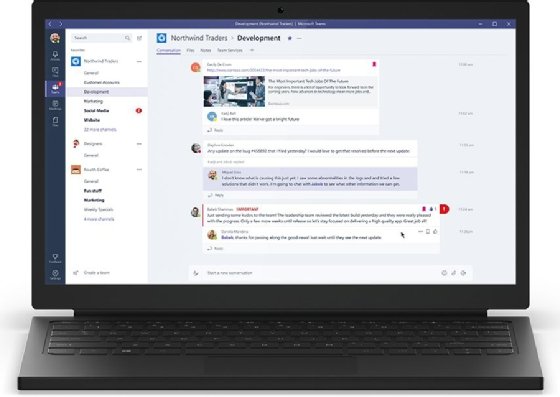
Eugenio Marongiu - Fotolia
Microsoft slow to fulfill request for more Teams channel control
Microsoft won't prioritize a feature that would let Teams users move channels between groups, despite tens of thousands of requests. Users have asked for the capability since 2016.
For years, Microsoft Teams users have requested the ability to move channels from one group to another on the messaging app. But the appeals have not made Microsoft move any faster to provide the feature.
Moving channels to different groups would let Teams users keep message history and file data from old groups as they combine them with new groups. The request first appeared on the Microsoft Teams user feedback forum in 2016. Since then, more than 27,600 people have voted for the feature.
Microsoft has kept the request on the backlog, which means it plans to address the issue but not soon. A Teams engineer said on the forum 10 months ago that Microsoft has prioritized "other work items" and will update users when there is more to share on the topic. Microsoft declined to comment further on the matter.
Users on the forum said they "need this option ASAP" and that it's "way overdue." Moving channels avoids having to make new ones while keeping old ones for their content, users said. Under the current system, there is a lot of sprawl and duplication of channels. As a result, many users are in danger of hitting their limit of 200 channels per group.
Panagiotis Ragias, a design engineer at audiovisual integrator AVI-SPL, said that when departments merge within the company, it needs information from the Teams groups to support the new structure.
Microsoft should let users create a third Teams group and transfer everything into it or rename one group and transfer other channels into it, Ragias said.

"In any case, the structure and the content of each [group], including channels, files and chat, need to be transferred," Ragias said. "Otherwise, we lose important information."
Dion Hinchcliffe, a principal analyst at Constellation Research, said IT administrators are frustrated with the lack of an easy way to transfer channels. They claim Microsoft focuses too much on the wants of end users while ignoring the needs of admins. Recent Microsoft Teams releases include end-user features like video conferencing breakout rooms and a new calling interface.
"It's kind of a scandal, given how responsive they've been on the user side, that they have not been responsive on the admin side," Hinchcliffe said. "It is a burning issue on the admin side."
The inability to merge groups has prevented some IT administrators from adopting Teams at their companies, Hinchcliffe said. They have turned to alternatives like Slack or Rocket.Chat instead.
The channel problem has affected more than just admins. To remove a collaborator from a Teams group, Cecilia Gaultney, a consultant at Scientific Consulting Group, had to create a new channel without the old data.
"We lost all the posts and activity that was in the previous channel," she said. "It is frustrating to lose so much of the context and history when you [move to a new group]."
According to Hinchcliffe, Microsoft may be stalling on solving the problem because a fix could inconvenience many users or take a long time to implement.
"How long does it take on average to resolve an issue like this? I don't have the answer to that question," Hinchcliffe said.
The ability to move channels between groups is one of several unanswered requests that have garnered more than 20,000 votes on the user forum. Droves of users have demanded threaded replies that will allow them to respond to specific conversations. They also want to be able to log into multiple accounts simultaneously.






